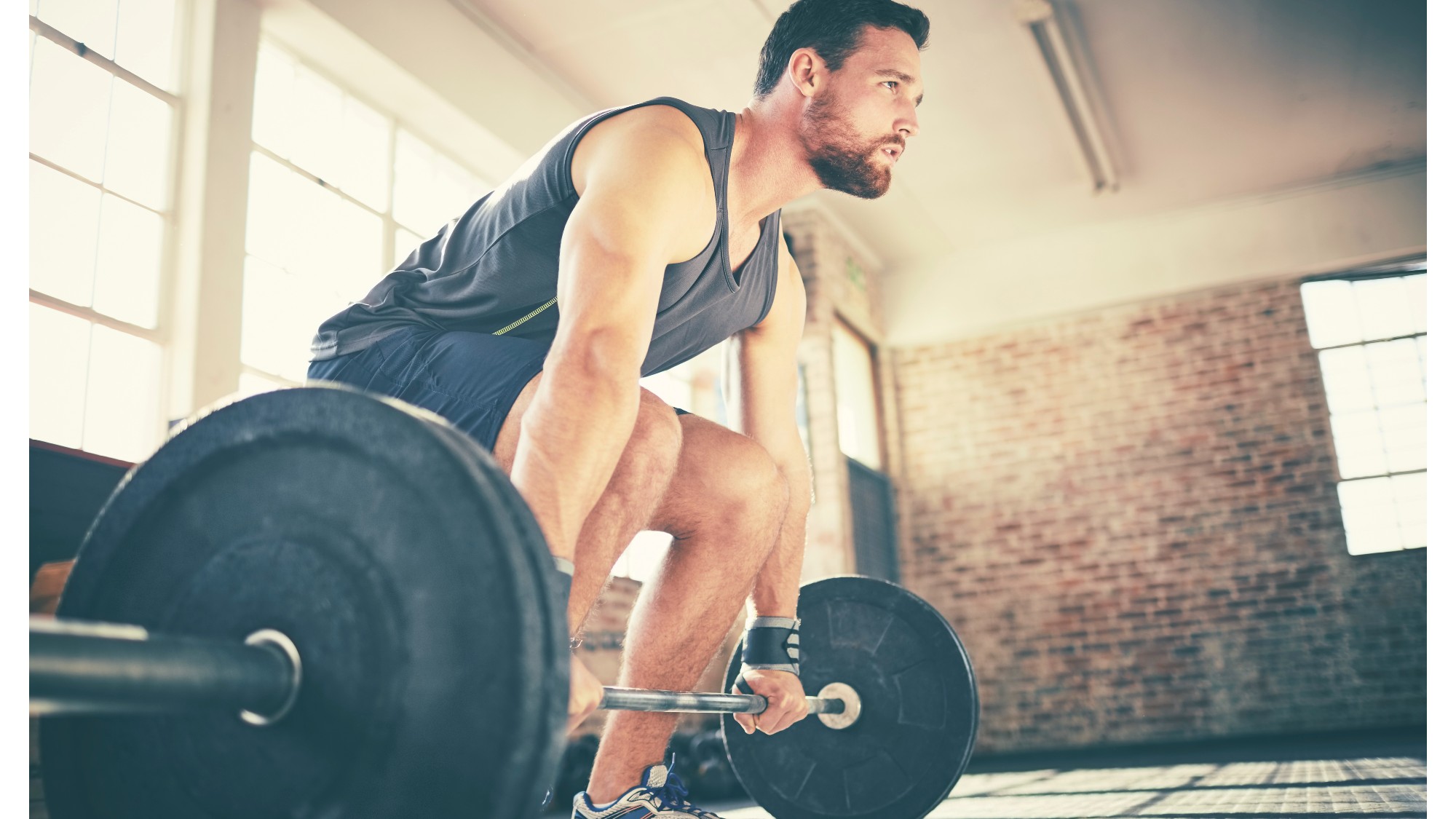
The deadlift is a staple, but do you know how to deadlift properly? It’s one of the most common functional exercises found in the gym and home workouts, but also very easy to get wrong. Thankfully, it’s an easy fix. So, if you’re looking to perfect your deadlift technique, you’ve come to the right place.
The deadlift is (traditionally) considered a quad and glutes dominant exercise but also works many muscle groups and is an efficient one-stop shop for building muscle and strength in your core and posterior chain (the muscles located down the back of your body).
If you’re currently fitting out home gym equipment, learn how to do a resistance band deadlift using the best resistance bands. As a caveat, always consult a qualified medical professional if you’re experiencing back pain before slotting this exercise into your next workout.
It’s time to build your deadlift from the ground up. Discover why this exercise is better than squats when it comes to working your glutes or read on to learn how to deadlift, the benefits and variations to try.
How to deadlift
Before you begin throwing plates onto your barbell, I want you to imagine bending down to pick up a box. The age-old workplace health and safety precautions tell you to bend at the knees, engage your core, and keep a flat back. And they apply here too, as you prepare to lift.
This example uses a barbell rather than a set of the best dumbbells. Here we go!
Step-1: Starting posture
Get instant access to breaking news, the hottest reviews, great deals and helpful tips.
Stand with your feet shoulder-width apart under the bar, the widest part of your foot in line with your barbell, and weight distributed evenly through your feet.
Step-2: Grip
Bend your knees, hinge forward at your hips, push your bum back and keep your back flat as you lower to grip the barbell in both hands.
Step-3: Set up
Grip the bar with your hands in an overhand (prone) grip just outside of your legs. Roll your shoulder blades back and down your back, engage your core and squeeze your shoulder blades together to engage your lats. Muscles should be locked (contracted). Sit your bum down and keep your chest forward facing. Look ahead, not down.
Step-4: Concentric phase (the lift)
Inhale. Keep your weight distribution even throughout your feet, then exhale as you drive through your feet to stand, keeping the bar in close contact with your legs. Squeeze your glutes at the top and fully extend at your hips.
Step-5: Eccentric phase (lowering)
Control the lowering phase as you hinge forward at your hips and track the bar down your thighs. At around knee height, rebend your knees and lower your bum to bring the barbell back down to the floor. Reset before your next rep.
What are the benefits of deadlifts?
The deadlift is a functional compound exercise, which means it closely mimics natural movement (like bending down to pick something up) and works multiple joints and muscle groups in one go. The result? You build a far more efficient engine.
You can use dumbbells or barbells to perform a deadlift, but the conventional barbell deadlift is my favorite as it allows you to progressively pack on weight as you get stronger.
Muscles worked in a deadlift include your quads, hip flexors, core muscles, and posterior chain. The posterior chain includes your erector spinae (the muscles that support your spine), glutes, hamstrings, and back muscles. Basically, most of your muscles are at play.
Nailing deadlift technique can improve functional maximal strength, build power and muscle and improve your hip health and grip, too. According to the National Strength and Conditioning Association (NSCA), the lift requires full-body engagement, placing a lot of stress on your musculoskeletal system and providing a solid base for building lifts like snatches and cleans.
Common deadlift mistakes

It’s easier than you think to get a deadlift wrong. Over time, small mistakes could result in serious injuries and entirely remove you from the deadlift game. Here are some common mistakes and how to fix them:
Hip positioning
At the top of the deadlift, it’s common for people to push their hips forward and lean backward. Overextension can subsequently lead to a lower back injury. Be conscious as you stand to extend without over-leaning.
Hips sitting higher than shoulders
Imagine reaching for the bar with straight legs — this puts your hips higher than your shoulders. All that pressure is now in your back and shoulders. Quick fix? Bend your knees (bum down) and keep your chest proud. Squeeze your core and lats so that the engagement becomes full-bodied and not isolated to your arms and lower back.
Throwing the barbell
If you’ve been to a fast-paced CrossFit class, you might have seen people throwing weights onto crash mats. It has its time and place, but you want to control the eccentric (lowering) phase and maximize the time your muscles work for. Plus, it’s better for your back and improves strength.
Deadlift variations to try
Consider yourself a die-hard deadlifter? Give my two favorite deadlift variations a go.
Slow-tempo eccentric deadlift
This is when the muscles lengthen as they contract, which is the lowering phase of a deadlift. It’s useful in strength training for building explosive power, strength and flexibility and challenges your muscles to work harder, research tells us. During eccentric deadlifts, you’ll lower for three or four seconds, pause at the bottom, then explosively lift your weight.
Romanian deadlift
Unsure how to do a Romanian deadlift? It’s a powerhouse exercise (very similar to a conventional deadlift), and effectively targets your hamstrings. Unlike a deadlift, you start by standing and control the descent without a hard stop on the floor.
If you need more leg day inspiration, why not discover how to do Bulgarian split squats and learn why you might be doing squats wrong?

Sam Hopes is a level 3 qualified trainer, a level 2 Reiki practitioner and fitness editor at Tom's Guide. She is also currently undertaking her Yoga For Athletes training course.
Sam has written for various fitness brands and websites over the years and has experience across brands at Future, such as Live Science, Fit&Well, Coach, and T3.
Having coached at fitness studios like F45 and Virgin Active and personal trained, Sam now primarily teaches outdoor bootcamps, bodyweight, calisthenics and kettlebells.
She also coaches mobility and flexibility classes several times a week and believes that true strength comes from a holistic approach to training your body.
Sam has completed two mixed doubles Hyrox competitions in London and the Netherlands and finished her first doubles attempt in 1:11.

